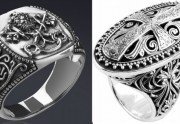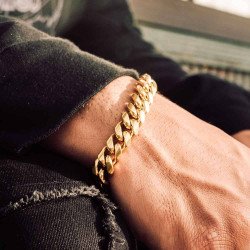Whether you're looking to offload an unwanted piece, fund a new venture, or expand a cherished collection, mastering...
- Womens JewelryWomen\'s Rings
- Women\'s Rings
- Women Rings
- Lab Grown Diamond Engagement Rings
- Engagement Rings
- Zircon Solitaire Rings
- Alphabet ring
- Diamond Rings
- Eternity Rings
- Three Stone Diamond Rings
- Aquamarine Rings
- Diamond Emerald Rings
- Morganite Engagement Rings
- Chevalier Rings
- Chevalier & Signet Rings
- Mom Ring
- Ruby Rings
- Sapphire Rings
- Thumb Rings For Women
- Women\'s Necklaces
- Women\'s Bracelets
- Earrings for Women
- Cross Necklaces For Women
- Heart Jewelry
- Valentine\'s Day Gifts for Her & Him
- Emerald Jewelry
- Aquamarine Jewelry
- Morganite Jewelry
- Mom jewelry
- Ruby Jewelry
- Sapphire Jewelry
- Evil Eye Jewellery
- Women\'s Rings
-
arrow_forward
Men's Rings Men's Rings
-
arrow_forward
Men Bracelets Men's bracelets
-
MenuBack
- .
- CALL FOR ORDER 2105059292
-
WOMEN'S JEWELRY
-
-
RINGS
-
Lab Grown Diamond Engagement Rings
-
Zircon Solitaire Fine Rings
-
Alphabet ring
-
Name Rings
-
Diamond Rings
-
Rings Silver/Gold
-
Zircon Yellow Gold 14k Fine Rings
-
Eternity Rings
-
Three Stone Diamond Rings
-
Zodiac Rings
-
Aquamarine Rings
-
Diamond Emerald Rings
-
Morganite Engagement Rings
-
Chevalier Rings
-
Mom Ring
-
-
-
BRACELETS
-
Gold/Silver Bracelets
-
Letters Bracelets
-
Custom name bracelet
-
Zodiac
-
Diamond Bracelets
-
-
-
NECKLACES
-
Diamond Necklaces
-
Necklaces Silver/Gold
-
Evil Eye Necklace
-
Name Necklaces
-
Zodiac Pendants
-
Rosary Necklace
-
Necklaces for Moms
-
-
-
EARRINGS
-
Earrings Gold/Silver
-
Diamond Earrings
-
Dangling Earrings
-
-
-
CROSSES
-
Christian Baptismal Crosses
-
Diamond Crosses for Women
-
-
-
MEN'S JEWELRY
-
-
Men Rings
-
Signs & Symbols Rings for Men
-
Mens Gemstone Rings
-
Mens Skull Rings
-
Mens Christian Rings-Religious Rings for Men
-
Animal Rings for Men
-
Economic Line
-
-
-
Men BraceletsMen Bracelets
-
BRACELETS
-
-
-
CufflinksCufflinks
-
Classic Cufflinks
-
Fashion Cufflinks
-
-
-
Men's NecklacesMen's Necklaces
-
-
-
Men CrossesMen Crosses
-
MEN'S CROSSES
-
-
-
WEDDING BANDS
-
Latest posts
-
 The Insider's Guide to Smart Jewelry Buying & SellingRead more
The Insider's Guide to Smart Jewelry Buying & SellingRead more -
 Women's Chevalier Rings 2025: The Return of Strength and Elegance09/29/2025Read more
Women's Chevalier Rings 2025: The Return of Strength and Elegance09/29/2025Read moreThe chevalier ring is not just a piece of jewelry. It is a piece of history, a symbol of strength and identity that...
-
 Γιατί το Χρυσό Κόσμημα Είναι και Πάλι στο Επίκεντρο08/28/2025Read more
Γιατί το Χρυσό Κόσμημα Είναι και Πάλι στο Επίκεντρο08/28/2025Read moreΤα τελευταία χρόνια βλέπουμε το χρυσό κόσμημα να κατακτά ξανά τις προτιμήσεις — όχι απλά σαν μια περαστική μόδα, αλλά...
-
 Why People Connect with Christian Jewelry04/26/2025Read more
Why People Connect with Christian Jewelry04/26/2025Read moreChristian jewelry has always held a deep symbolic meaning for believers across the world. Whether it is rings...
-
 Lab-Created Diamonds03/21/2025Read more
Lab-Created Diamonds03/21/2025Read moreUnderstanding Lab-Created Diamonds Lab-created diamonds are gemstones engineered in scientific facilities. They...
-
 6 Suggestions for Selecting Jewelry as a Gift (That They’ll Truly Appreciate)03/13/2025Read more
6 Suggestions for Selecting Jewelry as a Gift (That They’ll Truly Appreciate)03/13/2025Read moreJewelry is a heartfelt present. Here’s how to ensure you choose something your loved one will cherish.
-
 Χριστιανικά Κοσμήματα: Διαχρονική Πίστη και Ομορφιά12/28/2024Read more
Χριστιανικά Κοσμήματα: Διαχρονική Πίστη και Ομορφιά12/28/2024Read moreChristian jewelry is a unique category of jewelry that combines spirituality with aesthetics. On our website,...
-
 The Golden Age of Investing: The Trail of Gold Over the Last 20 Years10/05/2024Read more
The Golden Age of Investing: The Trail of Gold Over the Last 20 Years10/05/2024Read moreGold has always been one of the most precious metals and a traditional store of wealth. Its value is based on its...
-
 The Charm of Christian Jewelry by VisionGold.org Workshop08/19/2024Read more
The Charm of Christian Jewelry by VisionGold.org Workshop08/19/2024Read moreChristian jewelry holds a special place in the hearts of believers, as it combines spirituality with artistic...
-
 From Heart to Hand: Tips & Ideas to Give a Promise Ring06/15/2024Read more
From Heart to Hand: Tips & Ideas to Give a Promise Ring06/15/2024Read moreTake your relationship to the next level with one of our creative and romantic ways to give your partner a promise ring.
Blog categories
Search in blog

The anatomy of a solitaire diamond engagement or wedding ring
The anatomy of a single stone with a diamond engagement or wedding ring VisionGold®
When it comes to buying an engagement or wedding ring, there is more to it than meets the eye. Not only does the ring have to have the perfect combination of light, color and sparkle, but there are many other things that make up the anatomy of a diamond ring. See the in-depth anatomy of a single stone diamond engagement or wedding ring in the image below:
VisionGold® Anatomy of a single stone engagement or wedding ring
THE BOUND
The binding consists of the upper part of the monolith and is usually made of white gold or platinum and holds the diamond in place. Here are some different types of diamond binding that you can find in a single stone engagement ring:
Four teeth or nails: With four teeth or nails there will be less metal holding the center stone, making the diamond the main attraction of the monolithic diamond engagement or wedding ring.
Six teeth or claws: Bonding with six teeth or claws is known to hold a diamond more firmly in place. It also offers more protection for the diamond than tying the four teeth.
Bonding with double teeth: Bonding with double teeth is a binding with four teeth that are divided into smaller teeth; making this four teeth turn into eight teeth. It securely holds the diamond in place while giving the ring a sleek look and feel. The double nails are placed very close and add to the overall design and appearance of a single stone diamond engagement or wedding ring.
Corner binding: In most cases, square diamonds, such as princess and marquise, and heart-shaped diamonds need a little more protection, especially at the corners. Binding with corners will help protect these corners and prevent them in everyday use.
Binding with a stick: A binding with a stick consists of a piece of metal, which perfectly surrounds the entire center diamond while holding it firmly in place.
Half-stitch binding: A half-stitch binding holds the center stone in place, embracing the opposite sides of the diamond with metal.
Binding with bars: Binding with bars has small metal bars on the side of the diamond, which holds the center stone in place. Only half of the diamond is covered with metal leaving enough space for the diamond to shine.
THE BASE
The base, also known as the 'frame', is the lower part of the ring that hugs your finger and is made of 18K white gold or platinum gold.The type or style of stem you choose will affect the design and overall appearance of single stone diamond engagement or wedding ring.The stem can be left plain or placed with side stones.An engagement ring is available in the following types of "frames":
Straight base: If you want a straight base in an engagement ring with a straight torso, the entire design around the ring will have the same width from the base to the back of the "frame".
Gradient base: In contrast to the straight "frame", its width with a gradient base will become narrower the closer we get to the top. This type of base is especially popular in classic single stone rings, where the emphasis is on the diamond center.

Inverted Degradate base: The side on the side of the center stone becomes wider towards the bottom of the ring.
Knife base: The base of the knife base is known as the sharp rectangular edge found at the top of the monolith.
Opposite base: The sides opposite the center diamond are open giving the ring an elegant look.
A straight base is a classic circular profile commonly found in diamond engagement ring designs.
D-base: The D-base is typically known as the European base. The D-base gives the impression that the bottom of the ring is square and not round.
Raised base: The Raised base of the ring uses metal bows to hold and increase the height of the diamond.
Overlay or overlay member: The overlay trunk is where the tape on each side of the center monolith overrides each other to give it the appearance of an overlay.
ENGRAVING
The diamond feature is engraved on the metal inside the ring. The trademark of our jewelry workshop: VisionGold. Each monolith will contain the seal of the metal used, ie: 750 in the case of 18K gold and 950 in the case of platinum. Other details such as the center diamond used may also be engraved on the inside of the trunk.
Did you know that VisionGold offers a free engraving service with every single stone engagement ring purchase? The service allows you to add a personalized note to the ring giving you the opportunity to engrave a special message to your loved one inside the base.
The anatomy of a diamond ring is truly fascinating. Make sure you review the infographic before buying a diamond designer engagement ring for your soulmate. If you need help with the engagement ring to buy a single stone ring for the love of your life, visit our VisionGold jewelry workshop. We will help you choose the ideal monolith for your favorite !!!!
Related posts
-
 VisionGold Εργαστήριο Κοσμημάτων
Posted in: Jewelery buying guide05/21/2022χρυσοχοεια αθηνα,ερμου εργαστηρια,χρυσοχοιασ αθηνα κεντρο,εργαστηριο χρυσοχοιασ συνταγμα,εργαστηριο ασημικων...Read more
VisionGold Εργαστήριο Κοσμημάτων
Posted in: Jewelery buying guide05/21/2022χρυσοχοεια αθηνα,ερμου εργαστηρια,χρυσοχοιασ αθηνα κεντρο,εργαστηριο χρυσοχοιασ συνταγμα,εργαστηριο ασημικων...Read more -
 Επιλέξτε το σωστό διαμάντι για το μονόπετρο δαχτυλίδι σας
Posted in: Jewelery buying guide05/21/2022Τα διαμάντια είναι παντοτινά και φυσικά ο καλύτερος φίλος μιας γυναίκας........ Παρόλα αυτά είναι υπερτιμημένα και...Read more
Επιλέξτε το σωστό διαμάντι για το μονόπετρο δαχτυλίδι σας
Posted in: Jewelery buying guide05/21/2022Τα διαμάντια είναι παντοτινά και φυσικά ο καλύτερος φίλος μιας γυναίκας........ Παρόλα αυτά είναι υπερτιμημένα και...Read more -
 Οδηγός αγοράς ανδρικών δαχτυλιδιών
05/21/2022Η πλειοψηφία των ανδρών πιθανότητα θα φορέσει μόνο ένα δαχτυλίδι στην ενήλικη τους ζωή αυτό είναι η Βέρα τους. Ένα...Read more
Οδηγός αγοράς ανδρικών δαχτυλιδιών
05/21/2022Η πλειοψηφία των ανδρών πιθανότητα θα φορέσει μόνο ένα δαχτυλίδι στην ενήλικη τους ζωή αυτό είναι η Βέρα τους. Ένα...Read more -
 Πρόταση γάμου από την οπτική της γυναίκας
Posted in: Wedding proposal with engagement ring05/21/2022Πρόταση γάμου από την οπτική της γυναίκας Αχ, ο ρομαντισμός της προτάσεις γάμου, τα λουλούδια η μουσική το φως των...Read more
Πρόταση γάμου από την οπτική της γυναίκας
Posted in: Wedding proposal with engagement ring05/21/2022Πρόταση γάμου από την οπτική της γυναίκας Αχ, ο ρομαντισμός της προτάσεις γάμου, τα λουλούδια η μουσική το φως των...Read more -
 What Is The Ideal Necklace Length For Each Set - A Mini Jewelery Classification Guide
Posted in: Jewelery buying guide05/24/2022We are women and few of us have the ability to be submissive to ornaments. Their brilliance exudes a distinct...Read more
What Is The Ideal Necklace Length For Each Set - A Mini Jewelery Classification Guide
Posted in: Jewelery buying guide05/24/2022We are women and few of us have the ability to be submissive to ornaments. Their brilliance exudes a distinct...Read more









Leave a comment